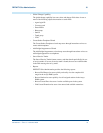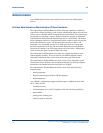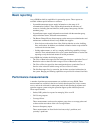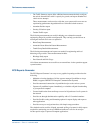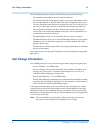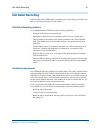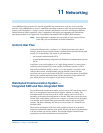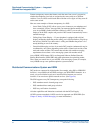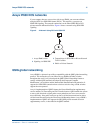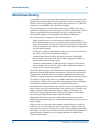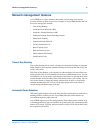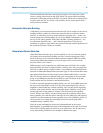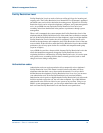
83
Overview for Avaya IP600 Internet Protocol Communications Server
555-233-001 — Issue 5 — November 2000
11 Networking
Avaya IP600 provides powerful voice and data capabilities and connections to a variety of voice and data
networks. Avaya IP600 builds on Avaya’s established networking strengths to offer you network-management
features, network interfaces, a variety of private-network configurations, and end-to-end Integrated Software
Defined Network (ISDN) capabilities. Avaya’s leadership in developing and supporting open international
networking standards is also apparent in Avaya IP600’s compatibility with the QSIG global standards.
Note:
Some applications or products are unavailable in some countries. Please
check with your local distributor for further information.
Uniform Dial Plan
Uniform Dial Plan provides a common 4- or 5-digit dial plan that can be shared
among a group of private-network switches. Interswitch and intraswitch dialing both
require 4- or 5-digit dialing. This feature is used with either:
• An electronic tandem network (ETN)
• A main/satellite/tributaryconfiguration and Distributed Communications Systems
(DCS).
In addition, it can provide uniform 4- or 5-digit dialing between 2 or more private-
switching systems without ETN, main, satellite, and tributary switches, or DCS.
With Uniform Dial Plan (UDP), a unique 4- or 5-digit number is assigned to each
station in the network. A unique number (private-network location code plus
extension) can be used at any location in the ETN to access that station. Avaya IP600
enhances the standard uniform dial plan with the unrestricted 5-digit uniform dial
plan, which allows up to five digits to be parsed for call routing.
Distributed Communication System —
Integrated SDN and Non-Integrated SDN
For a multilocation company that requires several systems, DCS may be the answer.
DCS is an arrangement of private-network switches, referred to as nodes. The
maximum number of nodes that can be in a DCS complex varies from 20 to 63,
depending on the particular configuration of switches. DCS nodes can be physically
located in the same building, spread across a campus, or scattered across the country
or around the world. Digital trunks interconnect the switches that serve the DCS
complex. The links connecting a DCS may also be provided via a Virtual Private
Network (VPN).
The functions and features of DCS are made possible by the use of an advanced
interprocessor data link connecting each switch, allowing call-processing information
to be passed from one switch to another. The data link supplies selected feature
transparency and efficient utilization of shared facilities.



